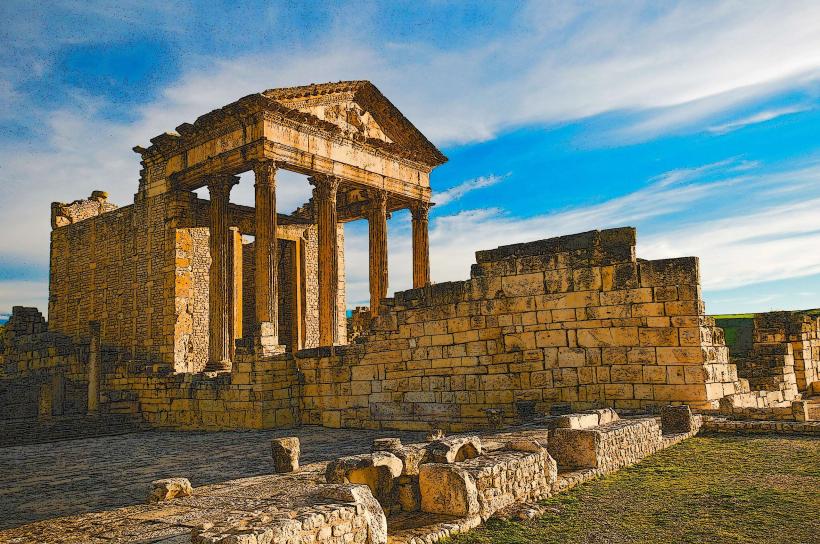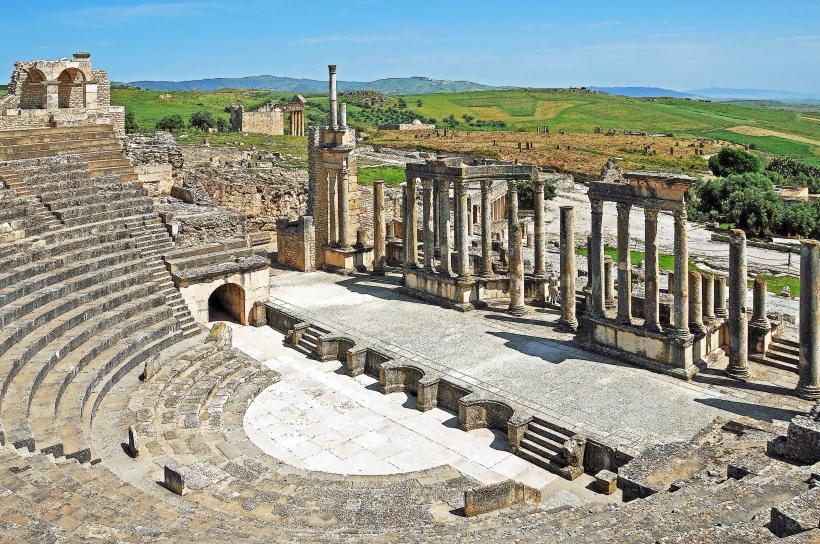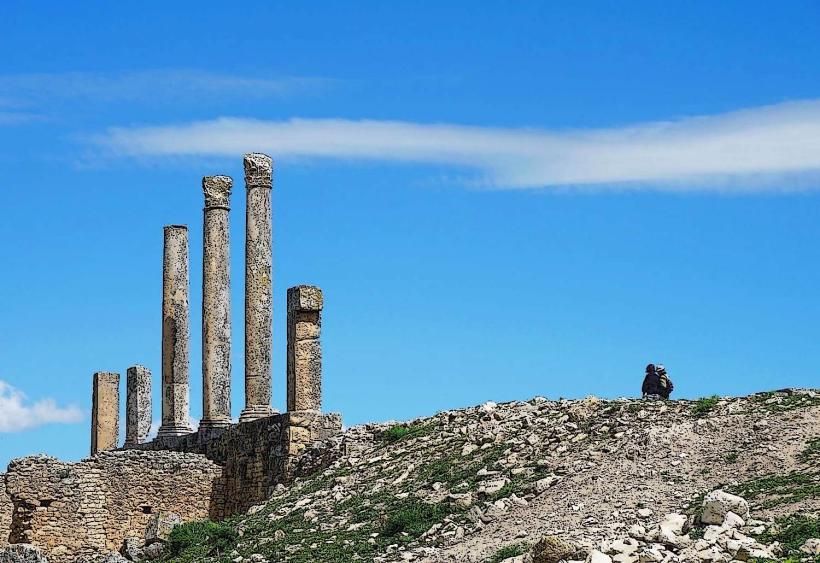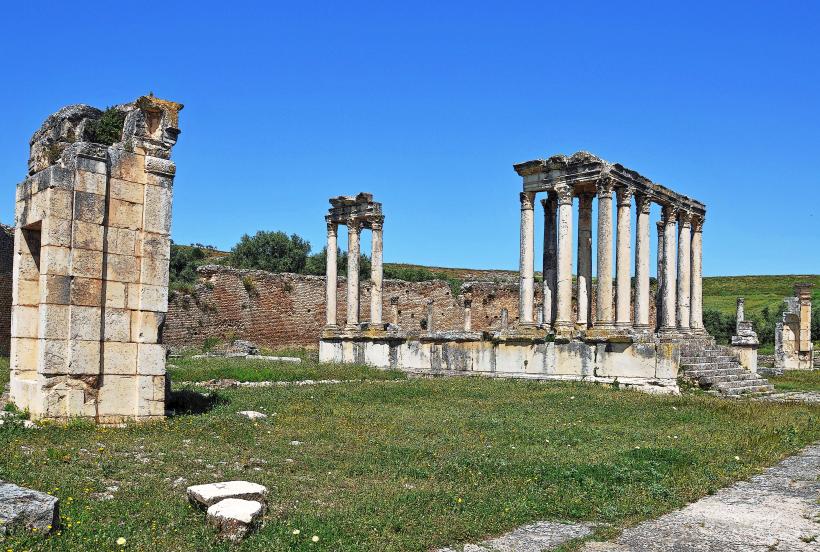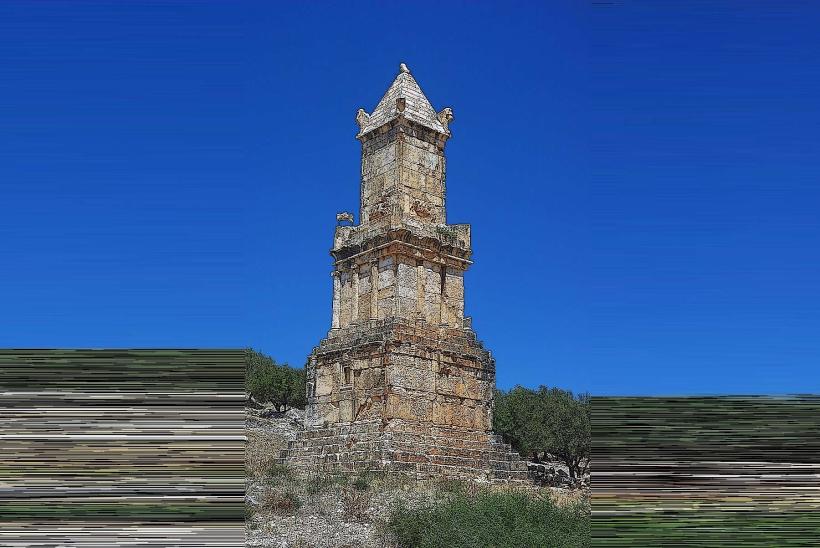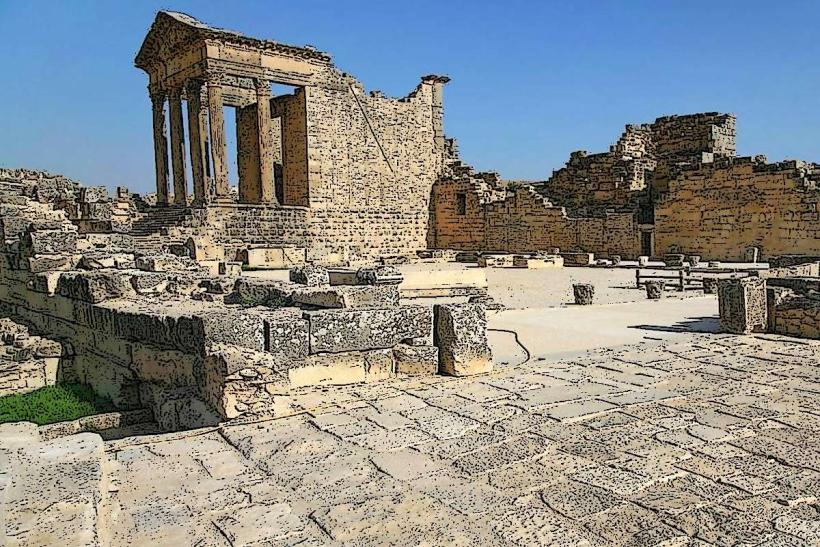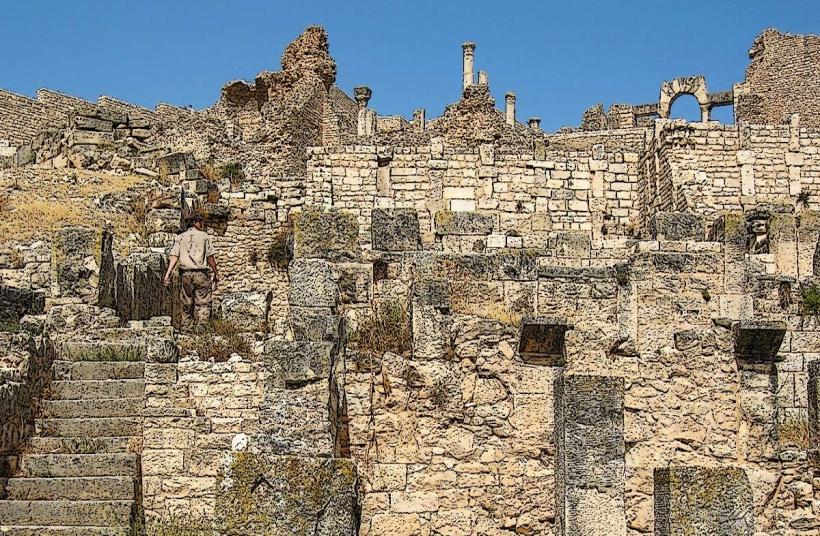Information
Landmark: Dougga BathsCity: Dougga
Country: Tunisia
Continent: Africa
Dougga Baths, Dougga, Tunisia, Africa
Overview
In northern Tunisia, the baths of Dougga-once bustling with steam and chatter-give a vivid glimpse of everyday Roman life in North Africa.These thermal complexes showcase not only the ingenuity of Roman engineering but also reflect the era’s social, cultural, and political ideals-places where heated marble floors and bustling bath halls told their own story.In Dougga, you’ll find several notable bathhouses, each boasting its own distinctive design-arched doorways worn smooth by centuries-and a rich past.First.The Licinian Baths, or Thermae Licinianae, rose in the early 3rd century CE-most likely under Caracalla’s rule-and stood as Dougga’s largest, grandest public bathing complex, with echoing halls built to impress.The name comes from the Licinii family, who likely paid for or helped build them-perhaps even choosing the stone that still catches the afternoon light.Layout and Architecture: The complex mirrors the classic Roman bath design, with its frigidarium-a broad, chilly hall where three tall arched windows frame the sweep of the valley below.After the hot rooms, you’d step in here to cool down, the air crisp against your skin.Tepidarium: a gently heated room where you ease into the warmth, letting your skin adjust before moving on.Caldarium: a heated chamber where warmth rises from the floor and slips through narrow wall flues.Palaestra: a wide, open space where people gather to train, stretch, and play under the sun.Latrines and service corridors: Among the more striking details is a preserved tunnel where slaves and workers once slipped through in near darkness to reach their posts without unsettling the bathers.The builders used a mix of Roman concrete, local limestone, and opus africanum-a North African technique with tall stone frames packed tight with rough, gray rubble.Barrel vaults rise overhead into high, airy ceilings, a clear sign of skilled engineering built for strength as well as beauty.As a public bathhouse, the Licinian Baths bustled with life-citizens came to wash away the day’s dust, stretch their limbs, swap stories, and strike business deals.Step two comes next-keep the rhythm shifting between quick, punchy lines and longer, flowing ones.The Aïn Doura Baths date to the late 2nd or early 3rd century CE, built in a style that still carries the warmth of ancient stone.This bathhouse is a bit smaller, but it stands out for its intricate carvings and the distinct Punic–North African style woven into its design.Architecture and features include the frigidarium, tepidarium, and caldarium, following the usual order you’d find in a Roman bath, from the cool splash to the steamy heat.Latrines sit where they can keep the area clean and let rainwater drain away without pooling.Heating was provided by a hypocaust system, though it wasn’t as grand as the one in the Licinian Baths, and the warm air rose through stone floors that still smell faintly of ancient smoke.The water supply probably came from aqueducts or nearby springs, stored in cool stone cisterns to keep the pressure steady and the temperature just right.Intricate mosaics cover several rooms, with shimmering fish and graceful human forms-classic Roman bath designs that spoke of cleanliness and leisure.The mosaics, rich in artistic detail, rank among the best-preserved treasures from the Roman provinces of North Africa, their colors still vivid after centuries.These baths probably served the middle class, offering a place to wash and to worship, their warm stone walls echoing the blend of spiritual and practical rituals that shaped Roman daily life.Number three.The Bath of the Cyclopses gets its name from a striking mosaic that once covered the frigidarium floor, showing Cyclopes hammering out Jupiter’s thunderbolts.The mosaic was taken down and now rests in the Bardo National Museum in Tunis, its colors still catching the light.Smaller than the other bathhouses, this complex likely catered to a nearby neighborhood or guild, not the bustling crowds of the main public baths.It might have been semi-private, tucked inside a wealthy family’s estate or reserved for a small community group.Frigidarium - the heart of the building, its floor shimmering with intricate mosaic patterns.Latrines: an unexpectedly elaborate setup with twelve worn wooden seats, hinting at frequent gatherings.Entrance Fountain: a shallow stone basin where visitors rinse their hands or splash cool water on their faces before stepping into the bath.Decorative Themes: The Cyclops mosaic belongs to a wider Roman tradition that wove divine myths into everyday places-like a courtyard floor shimmering with ancient stories.Here, it highlights power, skilled craftsmanship, and a sense of divine order-qualities the bath’s patrons may have valued, like the precise symmetry of its tiled floor.At Dougga’s Baths, the hypocaust’s steady heat, the clever flow of water, and the precise stonework show how Rome could shape its urban engineering to fit life on the far edge of the empire.Cultural Integration: Though rooted in Roman design, the baths weave in local stonework and architectural touches, blending Roman structure with the warm, earthy character of Berber tradition.Social Stratification: The size and placement of the baths hint that people from different classes used spaces with very different comforts-one might have a marble bench, another just a plain stone ledge.The grand baths, like the Licinian, bustled with the public, steam curling into the air, while the smaller ones likely served only the elite or select circles.The walls, arches, and even a few hypocaust channels still stand solid, their stone surfaces worn smooth by time, with much of the original structure remarkably intact.Many mosaics have been unearthed and moved to museums, yet a few still rest where sunlight falls across their worn stones.Visitors can wander through Dougga’s baths, where clear signs guide them, noting each room’s layout and purpose-like the warm chamber where steam still seems to cling to the stone.The baths of Dougga showcase Roman luxury and engineering, while vividly revealing how the empire carried its urban blueprint far beyond Italy-then wove it together with local stone, traditions, and craft to shape a distinctly North African vision of Roman life.

